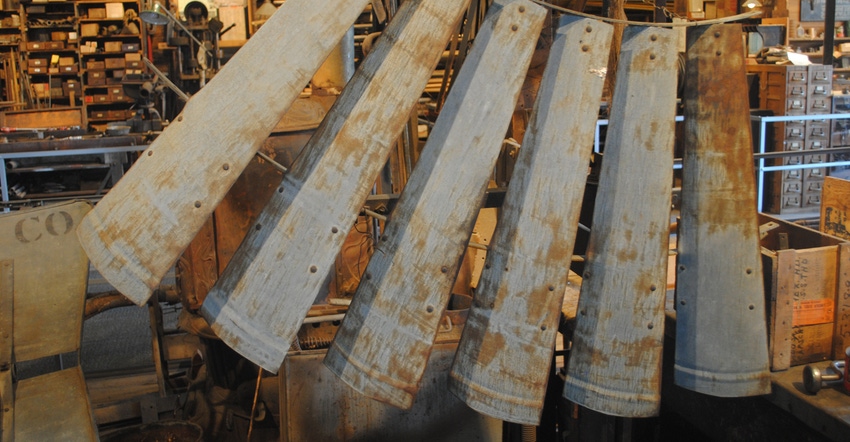August 31, 2018

Many places in the Great Plains amaze me. The natural beauty of our region, often in obscure and remote locations, is awe-inspiring. But sometimes it is the innovation of our people, those folks who came before us, that impresses me most about our Great Plains states.
I recently visited the Kregel Windmill Factory Museum in Nebraska City, Neb. This 112-year-old business built the popular Eli brand windmills that were sold in southeast Nebraska and into Iowa, Kansas and Missouri. The museum memorializes the industrial history of the early 1900s.
All tools in the shop were run off a factory line shaft. The museum has preserved those tools, the line shaft and a part of the region’s history, almost completely in place. The shop looks the same as it did when it was operating at its peak in 1923, when they built 130 windmills with six or eight employees. The shop was hot in the summer and cold in the winter. The company had morning meetings to communicate the work of the day, because once the line shaft was running, you didn’t want to speak to each other or take attention away from the work. One glimpse away from the machine could mean a tragic accident.
This museum reminds me of Neligh Mill in Neligh, Neb. In the same way, much of the equipment at Neligh Mill was left intact. Visitors can almost hear the hum of the mill when it was operating, first as a flour mill and later as a feed mill, and they can see the actual machinery still in place. The innovation of the folks who worked at these places, which operated all around the Midwest, was incredible and should be admired. There were no cellphones. They didn’t have the technological advances that we have today to make the work easier and less complicated. Yet, they were innovative and creative in how they managed to get the job done.
On our farm today is a granary and elevator leg that was built by my grandfather John and his brother Fred. It was actually a larger granary that once stood in town, but it was cut in half and removed from its original location in pieces. The brothers reassembled the buildings into two granaries, with one on my great-uncle’s farm and the other built on my grandfather’s place where my family lives now.
When they cut the granary structure in two, the top half was lowered to the ground upside down. So, in the granary on our farm, all of the nails in all of the boards making up the small bins go up instead of down.
How did they cut this huge structure in half in the 1940s? How did they lower it to the ground without damaging it? How did they transport and reassemble these buildings and build elevator legs in each of them that would operate another 60 years without much maintenance? It is difficult for me to comprehend the nature of this endeavor. But the two brothers figured it out and made it happen. They took pride in the fact that they had accomplished this great feat. I would imagine many farming families have this type of innovation among their most cherished family stories. It is good to visit places like the Kregel museum and Neligh Mill as farmers, so we can continue to appreciate the hard work and expertise of those folks who came before us and before the days of GPS, autosteer and drones.
You May Also Like




